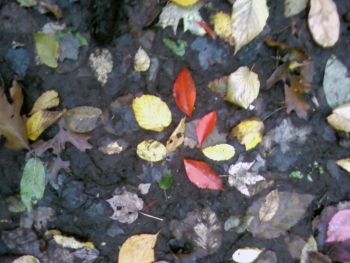
Benjamin Franklin once wrote that nothing is inevitable but death and taxes. As a lifelong Northeasterner, I’d add fallen leaves to his list. Unfortunately, many people look forward to fallen leaves about as much as they do death and taxes.
Is there another way to look at leaves? Here are some ideas::
1. Mulch-mowed leaves decay into lawns within a few weeks, adding nitrogen, phosphorous, and potassium to the soil.
2. Mulch-mowed leaves as well as whole leaves are an excellent replacement for bark mulch around shrubs and trees, and on plant beds. Like bark mulch, they moderate soil temperatures. Like bark mulch, leaves retain moisture around plant roots.Compared to bark mulch, decaying leaves supply a broader spectrum of nutrients. Better than bark mulch, leaves permit water and air to reach the soil surface and filter downward more efficiently.
3. Leaf mulch around trees and shrubs becomes soil organic matter within a year, making it a replacement for bagged compost and avoiding a build-up of empty plastic bags.
4. If you live in a leafy neighborhood, you may have “leftovers” even after mulch mowing. Leaves are a great addition to home compost piles.
5. Bonus point: When you keep all leaves on site, paper leaf collection bags become obsolete.
6. Many birds, reptiles, amphibians, insects, and mammals rely on leaf litter for nutrition and cover in wooded areas. Overwintering birds forage for insects and seeds in leaves. Moths and butterflies pupate in leaves. Firefly larvae live in leaf litter for up to two years before they emerge and delight us with their bioluminescent displays. Some native ground-nesting bees make their winter nests near and under leaf litter, as do many turtles, toads, salamanders, and snails.
7. The energy required to pick up, transport, and manage leaf litter at municipal facilities is bad for the environment.
Learn more and find a list of helpful resources at Zip06/TheDay.
